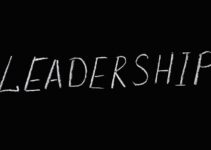You probably don't know the top 5 rules for Canadian government succession. Understanding these rules is crucial for grasping the intricacies of how leadership transitions occur in the Canadian government. From the Prime Minister's role to the constitutional requirements, there are specific guidelines that dictate the succession process. By familiarizing yourself with these rules, you can gain valuable insight into the orderly transfer of power within the Canadian government.
Key Takeaways
- The Prime Minister plays a crucial role in leading the Canadian government, making key decisions, implementing programs, and representing the public domestically and internationally.
- Cabinet reshuffling is a strategic process that ensures the right individuals are in the right positions to drive the government's agenda, taking into account competence, regional representation, diversity, and political strategy.
- The order of succession in the Canadian government is dictated by constitutional and legislative provisions, ensuring stability and continuity in governance and preventing power vacuums or disruptions.
- The government has a clear protocol for leadership vacancies outlined in its emergency succession plan, which ensures a smooth and efficient transfer of power, maintains stability and continuity, and prevents disruptions during uncertain times.
Prime Minister's Role
The Prime Minister's role is to lead the Canadian government and make key decisions on national policies and initiatives. As the head of government, the Prime Minister has the crucial responsibility of decision making, ensuring that policies are implemented effectively for the betterment of the nation. This involves overseeing the execution of government programs and initiatives, as well as representing the public in various national and international forums. The Prime Minister's role also encompasses the duty of public representation, where they serve as the face of the Canadian government, both domestically and abroad. They are responsible for articulating the government's vision and goals to the public and the global community, thereby shaping the country's image and fostering diplomatic relations. Overall, the Prime Minister's role is multifaceted, involving not only the implementation of policies but also the representation of the Canadian people on the national and international stage. It is a position of immense responsibility, requiring astute decision making and effective leadership to steer the country towards progress and prosperity.
Cabinet Reshuffling Process
To understand the Cabinet reshuffling process, you play a pivotal role in ensuring the Prime Minister's vision and goals are effectively implemented through strategic changes in ministerial positions. As the Prime Minister strives to align the government with evolving national priorities, cabinet appointments and reshuffling become essential tools. The process involves careful consideration of various factors such as competence, regional representation, diversity, and political strategy. Your influence may come into play as you provide valuable insight into the performance and effectiveness of current ministers in their respective ministerial responsibilities. Your observations and recommendations could contribute to the reshaping of the cabinet, ensuring that the right individuals are in the right positions to drive the government's agenda forward. Additionally, your understanding of key policy areas and your ability to assess the strengths and weaknesses of potential candidates for ministerial roles can significantly impact the reshuffling process. Ultimately, your active involvement in the cabinet reshuffling process can help the Prime Minister build a strong team capable of effectively addressing the nation's challenges.
Order of Succession
When considering the order of succession in the Canadian government, you must factor in various constitutional and legislative provisions that dictate the line of succession in the event of vacancies in key governmental positions. The succession hierarchy in Canada is established within a legal framework that outlines the specific order in which individuals would assume leadership roles should the need arise. This legal framework ensures a clear and organized process for the transfer of power within the government, maintaining stability and continuity in governance. The succession hierarchy typically follows the principles laid out in the Constitution Act, 1867, and other relevant legislation, providing a structured approach to leadership transitions and ensuring the smooth functioning of the government in times of change or uncertainty.
Understanding the order of succession is crucial for maintaining the stability and continuity of the Canadian government. This structured approach ensures that leadership transitions are handled in an orderly and efficient manner, preventing any power vacuums or disruptions in governance. Now that you grasp the significance of the order of succession, it's essential to delve into the leadership vacancy protocol.
Leadership Vacancy Protocol
How do you determine the protocol for handling leadership vacancies in the Canadian government? The leadership transition process in the event of a vacancy follows a clear protocol outlined in the Canadian government's emergency succession plan. When a leadership vacancy occurs, whether due to resignation, incapacitation, or other reasons, the protocol ensures a smooth and efficient transfer of power. The emergency succession plan specifies the order of individuals who would assume leadership duties in the event of a vacancy, ensuring that there is always a designated successor ready to step in if needed.
In the Canadian government, the leadership vacancy protocol is crucial for maintaining stability and continuity. It provides a framework for swift and orderly transitions, minimizing any potential disruptions to governance. This protocol is designed to prevent power vacuums and potential chaos during times of uncertainty, ensuring that the government can continue to function effectively even in the face of unexpected events.
Understanding the leadership vacancy protocol is essential for maintaining the stability and continuity of the Canadian government, emphasizing the importance of a well-defined plan for emergency succession.
Constitutional Requirements
Once a leadership vacancy occurs in the Canadian government, you must adhere to the constitutional requirements for the succession process. The constitutional requirements serve as the legal framework for the orderly transfer of power within the government. These requirements are essential for maintaining the stability and continuity of the Canadian government in the event of a leadership transition. The Constitution Act of 1867 outlines the fundamental principles that govern the succession process, ensuring that it is carried out in accordance with the rule of law.
One of the key constitutional requirements is the adherence to the established hierarchy of leadership succession. This hierarchy is defined within the constitution and outlines the specific individuals or offices that are designated to assume leadership roles in the event of a vacancy. Additionally, the constitution also mandates the process for appointing an interim leader to fulfill the duties of the vacant position until a permanent successor is determined.
Adhering to these constitutional requirements is crucial for upholding the principles of democracy and the rule of law within the Canadian government. By following the legal framework outlined in the constitution, the succession process remains transparent, orderly, and in accordance with the established laws and principles of the country.
Frequently Asked Questions
How Does the Canadian Government Handle Succession in the Event of a Natural Disaster or National Emergency?
In the event of a natural disaster or national emergency, the Canadian government ensures continuity through emergency response plans and succession planning. These plans outline clear protocols for the transfer of power and decision-making in times of crisis. Government officials are trained to act swiftly and decisively to maintain stability and provide essential services to the public. These measures help to ensure that the government can effectively respond to and manage emergencies, safeguarding the well-being of the nation.
Can the Prime Minister Be Removed From Office Before the End of Their Term, and if So, What Is the Process for This?
If you're wondering about the process for removing the Prime Minister before the end of their term, it's possible through a vote of no confidence in the House of Commons. This can lead to the Prime Minister's resignation or the dissolution of Parliament and a new election. In times of emergency, the Canadian government has rules in place for succession to ensure continuity of leadership and effective disaster handling.
Are There Any Specific Qualifications or Experience Required for Individuals in the Line of Succession to the Prime Minister?
To be in the line of succession to the Prime Minister, specific qualifications and experience aren't required. However, individuals in this line are typically experienced politicians who have held significant leadership roles. In a national emergency, the order of succession ensures a smooth transition of power. While there are no formal requirements, having a strong understanding of government operations and leadership skills is crucial for those in the line of succession.
What Role Does the Governor General Play in the Succession Process, and How Is Their Appointment Determined?
The Governor General plays a crucial role in the succession process. Their appointment process is determined by the Prime Minister, who advises the Queen. Once appointed, the Governor General's responsibilities include giving Royal Assent to legislation, representing the Crown at official events, and ensuring the continuity of government. This position is vital in ensuring the smooth functioning of the Canadian government and upholding the constitutional framework.
How Does the Canadian Government Ensure a Smooth Transition of Power During a Leadership Vacancy, and What Measures Are in Place to Prevent a Power Vacuum?
To prevent power vacuums and ensure a smooth transition, the Canadian government has measures in place. When leadership vacancies occur, the government follows a clear succession plan to maintain stability. This includes the appointment of an interim leader and adherence to constitutional guidelines. These measures prevent any power vacuums and allow for continuity of governance during transitions. Such procedures are vital for maintaining stability and ensuring the functioning of the government.
Conclusion
So, stay savvy with the Canadian government succession process, from Prime Minister's role to Constitutional requirements. Remember, the rules for reshuffling the Cabinet, order of succession, and leadership vacancy protocol are crucial. Keep calm and carry on, knowing the constitutional requirements ensure a smooth transition. Stay steady, savvy, and secure in your understanding of Canadian government succession.



